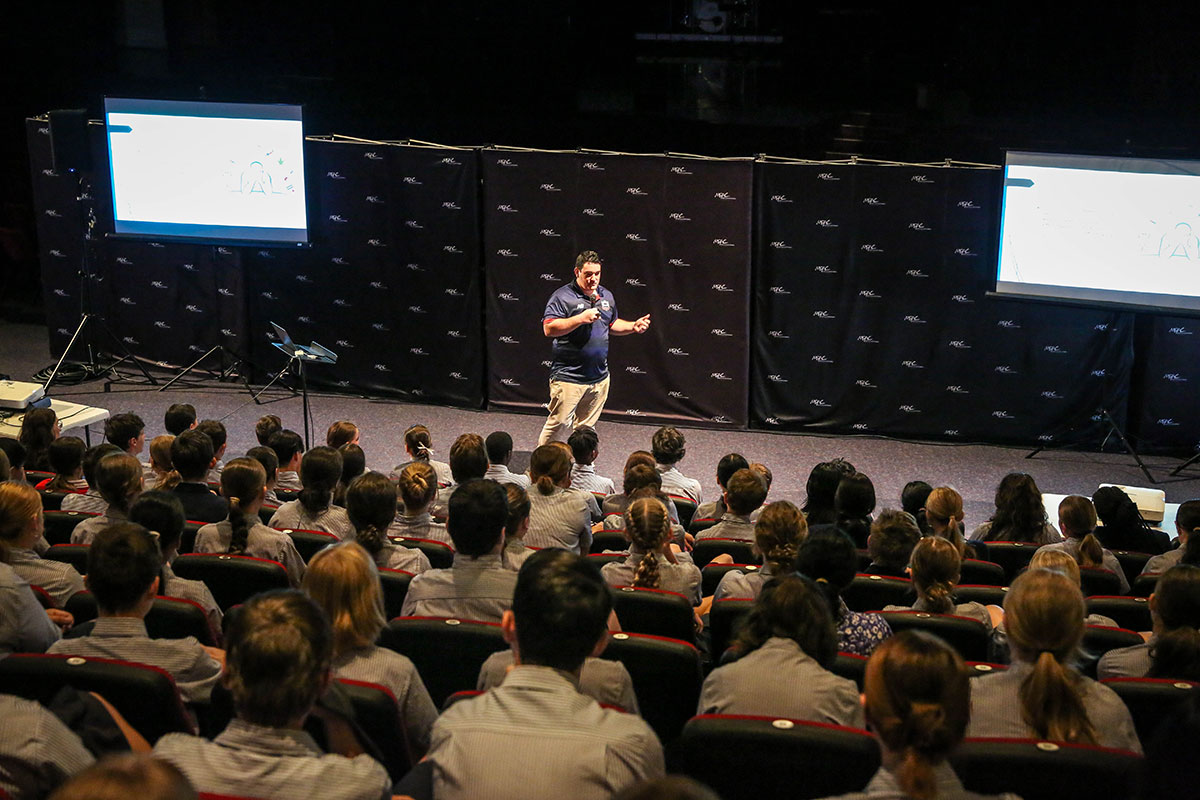Vapes are battery-operated devices that work by heating a liquid (or ‘juice’) until it becomes an aerosol that users inhale. They often resemble cigarettes but can look like a pen, highlighter or USB in an attempt to appeal to young people. They can be identified by taking the “cap” off a suspected item to see if it has a mouthpiece. Young people who consume nicotine through vaping can cause harm to their developing brains. This leads to a greater risk of developing a dependence with some research now suggesting that early vape use can lead to later tobacco dependence called the gateway effect.
Last week, I had the opportunity to speak with the year 9 cohort about vaping. I was able to provide the students with up-to-date information about this relatively new phenomenon and teach them about the cycle of addiction. Some of the information I discussed with them during my SL@M presentation are as follows:
- Vapes usually contain nicotine which harms adolescent brain development impacting memory, concentration, and mood
- Those who use vapes are more likely to take up tobacco smoking
- Short-term side effects can include vomiting, nausea and dizziness
- Long-term effects are not yet clear, but it is clear that inhaling chemicals such as the aerosol in vaping causes damage to the lungs and heart (even vapes without nicotine cause harm), with the Chief Health Officer stating that the only gas we should be inhaling is oxygen.
- In addition to nicotine, more than 200 chemicals have been found in some vape liquids.
- Nicotine is a psychoactive drug that alters mood and can increase stress over time.
- Vape use has increased in recent years, especially among youth and young adults.
- Teenagers are more likely to try vapes if they are exposed to vape advertisements on social media.
- Once nicotine receptors are formed, they do not die off.
Whether a young person has just started to vape or has been vaping for a while, there is still hope of overcoming the dependence. Counselling support can be provided to support young people using vapes to develop a plan that will help your young person to overcome it. If you have concerns that your young person might be vaping have a conversation with them and seek support early. Early intervention is always best.
Here are some tips for parents regarding vapes:
- Talk to your teen: Have open and honest conversations with your children about the dangers of vapes and why it’s important to avoid their use. Talk to them about alternative coping strategies if necessary.
- Know the signs: Be aware of the signs that your child may be using vapes, such as frequent use of mints or gum to hide the smell of vapour or an unusual change in behaviour that causes you concern.
- Stay informed: Stay up-to-date on the latest information about vapes and the dangers of their use.
- Get involved in your child’s life: Show an active interest in your child’s activities, friends, and hobbies, and be involved in their decision-making. Keep connected with your child at all costs.
- Encourage alternative activities: Encourage your children to engage in positive, healthy activities, such as sports or creative pursuits.
- Seek help if needed: If you suspect that your child is using vapes, seek help from a healthcare professional, school counsellor or chaplain.
If you are concerned about your child using vapes and would like to refer them to a school counsellor, please contact counsellor@mueller.qld.edu.au to initiate a referral.
Extra Resources:
Hiding in plain sight
https://www.youtube.com/watch?v=fjDP8rTktWw
Mueller School TV – Vaping Special Edition
https://mueller.qld.schooltv.me/wellbeing_news/special-report-vaping-au








